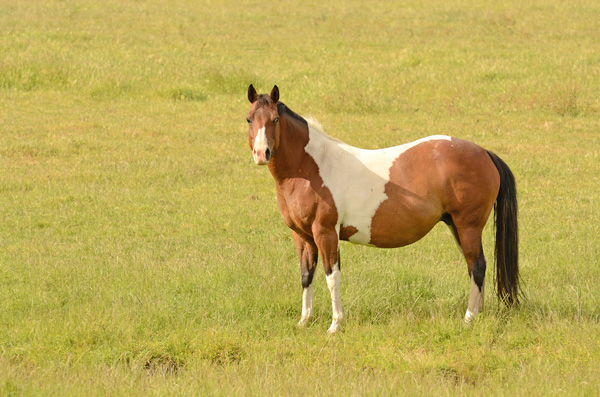
The experts at Kentucky Equine Research have looked at the effects of diet on horses that experienced tying-up. Here is a brief synopsis of that research.
To determine the effect of dietary starch, bicarbonate and fat content on metabolic responses and serum creatine kinase (CK) activity in exercising Thoroughbreds with recurrent exertional rhabdomyolysis (RER), five RER horses were fed three isocaloric diets (28.8 Mcal/d [120.5 MJ/d]) for three weeks in a crossover design and exercised for 30 minutes on a treadmill five days/week. On the last day of each diet, an incremental standardized exercise test (SET) was performed.
The starch diet contained 40% digestible energy (DE) as starch and 5% as fat; the bicarbonate-starch diet was identical, but was supplemented with sodium bicarbonate (4.2% of the pellet); and the fat diet provided 7% DE as starch and 20% as fat.
Serum CK activity before the SET was similar among the diets. Serum CK activity after submaximal exercise differed dramatically among the diets and was greatest on the bicarbonate-starch diet (6.51 +/- 1.5) and lowest on the fat diet (5.71 +/- 0.6). Appreciable differences were observed in the severity of RER among individual horses. Post-exercise plasma pH, bicarbonate concentration and lactate concentration did not differ among the diets. Resting heart rates before the SET were markedly lower on the fat diet than on the starch diet. Muscle lactate and glycogen concentrations before and after the SET did not differ markedly among the diets.
This study showed that a high-fat, low-starch diet results in dramatically lower post-exercise CK activity in severely affected RER horses than does a low-fat, high-starch diet without measurably altering muscle lactate and glycogen concentrations. Dietary bicarbonate supplementation at the concentration administered in this study did not prevent increased serum CK activity on a high-starch diet.
This report of KER’s 2003 research was published in Journal ofVeterinary Internal Medicine.
Read the entire research paper here: Effect of Dietary Starch, Fat, and Bicarbonate Content on Exercise Responses and Serum Creatine Kinase Activity in Equine Recurrent Exertional Rhabdomyolysis.


